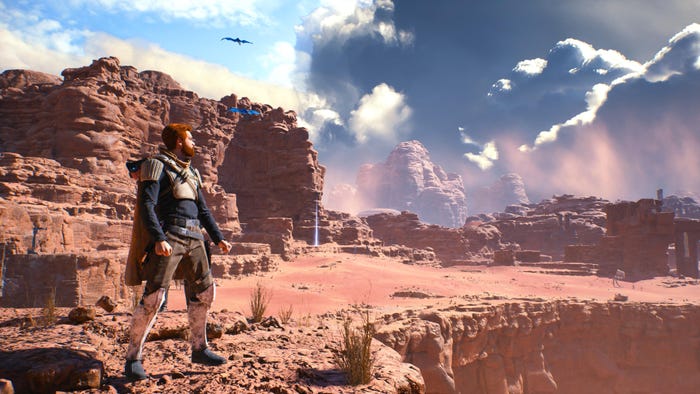
I’m going to mark down 2023 as a year where my relationship with playing video games began to take a notable shift. I cut myself loose from online live service games and invested a lot of time away from my game consoles, instead working on some incredible side projects, planning a wedding, and honing my skills in the hobby of miniature painting.
It’s a year that made me think about the craft of it all. The craft of writing, the craft of event planning, the craft of painting, the craft of working with sources on a story, the craft of carefully interviewing industry leaders, and the craft of conducting an interview with wonderful creatives. In work and in life, the act of cutting against inertia—of growing, and studying, and evolving—is an act of deliberation. Every person is cast out into a vast ocean they have no control over, which makes finding meaning, purpose, and steadiness in that world a daunting and difficult task.
Deliberation. Hm. “Art is about being in contact with another person and being in contact within their consciousness,” Double Fine’s Tim Schafer said to me in a chat about generative AI earlier in 2023. To make that contact requires a certain kind of deliberateness. It’s thrilling to think that the games below paint a portrait of the person I was in 2023, and that said person is a kind of bridge binding all these individual artists together.
In the past I have not always been fond of that person, burying their essence in a mix of self-effacing humor and insecurity. A list like this makes me more eager to shed those practices in 2024, and to keep practicing a deliberateness of my own.
Star Wars Jedi: Survivor (Respawn Entertainment/EA)
The story of Star Wars Jedi: Survivor is so stellar that it belongs on my top 10 list for that reason alone. But there’s already a Hutt’s bounty of great Star Wars stories out there (and yes, some stinkers too), so what makes Jedi: Survivor extra special is the skill and craft of Respawn developers in building a world that feels wonderful to traverse and lovingly authentic all at once.

Image via Respawn Entertainment/EA.
In one breathtaking moment Cal Kestis will be flying through portals in a battle with a Trident-class assault ship and in another he’ll be plumbing the depths of what seemed to be a small factory—but turns out to be a maze of collapsing platforms. And at the end what will he find? Some small tale of Koboh’s residents and a spicy new haircut.
Jedi: Survivor showcases the remarkable talents of the fine folks at Respawn Entertainment on a technical, narrative, and artistic level, and I frankly feel lucky to have played it.
Baldur’s Gate 3 (Larian Studios)
Baldur’s Gate 3 was an unexpected surprise for me. I have little attachment to Dungeons & Dragons and shrugged off the idea of a fantasy adventure that seemed—forgive me Larian—a bit generic.
Fool that I was for brushing it off. But the enthusiasm of developers and critics raving about the game was too great to ignore. And when I picked it up, I was blown away by some of the best quest design I’ve encountered in a role-playing game and a playstyle that excellently evoked the feel of a tabletop game.
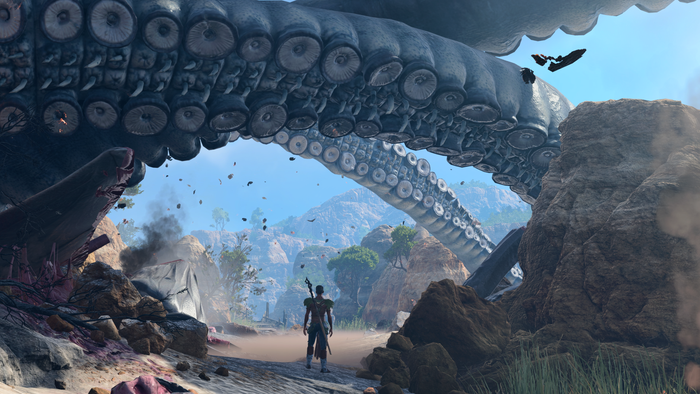
Image via Larian Studios.
This game solves so many of my problems with CRPGs. Environments feel dense with stories and treasure to uncover—but also can be flipped into combat zones at the drop of a hat. A plot centered on the otherworldly Illithids tees up setpieces showcasing the capital-W Weirder parts of the Dungeons & Dragons sourcebooks. And the unfolding effects of player choices? They felt as organic as if my favorite dungeon master were running a campaign for me.
I still hate the spell slot system. But hey. No game is perfect.
Dead Space (Motive Studios/EA)
I did not play the original Dead Space so my journey aboard the USG Ishimura was that of a newcomer to the series, not a fan returning to their favorite haunted house. But make no mistake, Motive made me a fan of this series which I now rank as a worthy science fiction story all in its own right.
I know the limb-slicing combat dates back to the original 2008 game but the polish and improvements made by Motive are so stomach-churningly gory that I made sure to use every weapon to see just how much damage I could do to the Necromorphs. The expanded level design made the Ishimura feel like a decrepit, rumbling wreck, and the escalating series of disasters that befall Isaac and his comrades pay off with narrative twists that still feel fresh 15 years after they were first conceived.

Image via Motive Studios/EA.
The 2023 Dead Space remake is a triumph of both Motive Studios and the original developers at Visceral Games. Two teams working across time and space and little direct contact with each other made something that feels so special and of course—so deeply horrifying.
The Legend of Zelda: Tears of the Kingdom (Nintendo)
The moment I realized Tears of the Kingdom was going to be like nothing else I’d ever played came while I was digging a hole. Or more precisely, digging through a tunnel blocked by an unending stream of boulders. I’d stumbled through smaller caves like this already and repeatedly thought I’d reached the end of the passage. But nope. It just kept going. New rooms with different hand-crafted setpieces appeared and threaten to waylay me from the main trail. I had to keep backing out to get more digging tools.
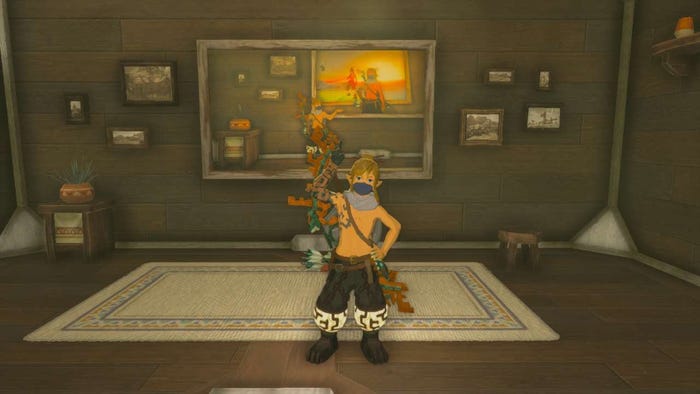
Image via Nintendo.
And midway through I stumbled into a boss encounter I was sure I wasn’t geared up enough to win but with persistence and patience I slew the Stalnox. It’s an experience you’d encounter in Minecraft but the realization that people hand-crafted this underground nightmare and the chaos-inviting Fusion system blew my mind.
Nintendo’s intended direction for the Legend of Zelda series doesn’t fully align with what I’ve enjoyed about the games, but Tears of the Kingdom gave me a proper appreciation for the company’s design philosophy. They aren’t here to tell an ongoing saga about Link, Zelda, and Ganon(dorf?), they’re here to consistently reinvent what it means set out on the world on a great adventure.
In Tears of the Kingdom, that adventure sent me to the depths of the world and the skies above it—a scale so vast it can remind you of how large our real world truly is.
RoboCop: Rogue City (Teyon/Nacon)
I’m as surprised as you are that a RoboCop game would be worthy of a top 10 list. Every time the corporate powers that be try making another story set in the world of 1987’s RoboCop, they usually make something that would have been satirized in RoboCop.
Developer Teyon didn’t quite overcome those barriers, but it was able to capture enough of the original film’s energy to pursue a worthy narrative goal in a sequel: exploring RoboCop’s humanity through the lens of arbitrary moral choices. The game shines brightest when it invites players to decide if they’d rather show grace and empathy for Detroit’s downtrodden or uphold their programming and ruthlessly enforce an inflexible criminal code.
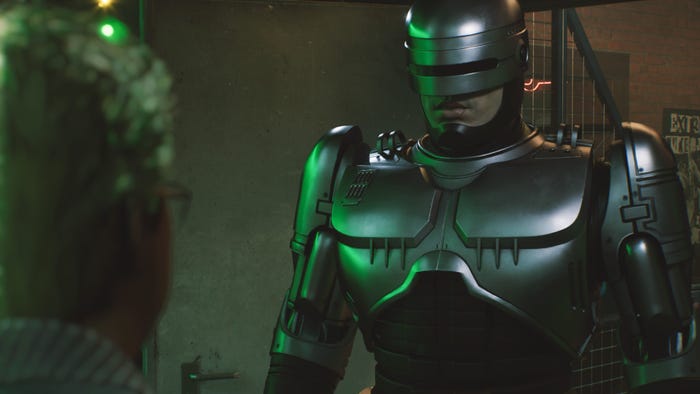
Image via Teyon/Nacon.
Making RoboCop the vessel of that choice—a character literally struggling between what he has literally been instructed to do versus what his lingering human instincts—makes it an even more compelling experience. It’s a good thing they got Peter Weller back to voice the character, because his line delivery is what seals the deal.
There’s room in a game of the year list to acknowledge this game is still full of technical and narrative flaws—but between the excellent moral choices and its over-the-top gunplay, RoboCop: Rogue City deserves a little love for standing out.
Sea of Stars (Sabotage Studio)
I don’t feel much nostalgia for the era of pixel art games. But when I do, it’s when developers use the aesthetic to create game worlds that feel alive and inhabited even when the player characters aren’t influencing it.
Sabotage Studio’s first game The Messenger didn’t quite nail this sense of worldbuilding for me, but in its follow-up title Sea of Stars, they swung big and knocked it out of the park, joining the ranks of titles like Owlboy, Loop Hero, and Cross Code. What makes Sabotage Studios’ so compelling is that the team is making distinct and confident choices about the worlds their games take place in and backing them up with tight, juicy gameplay.
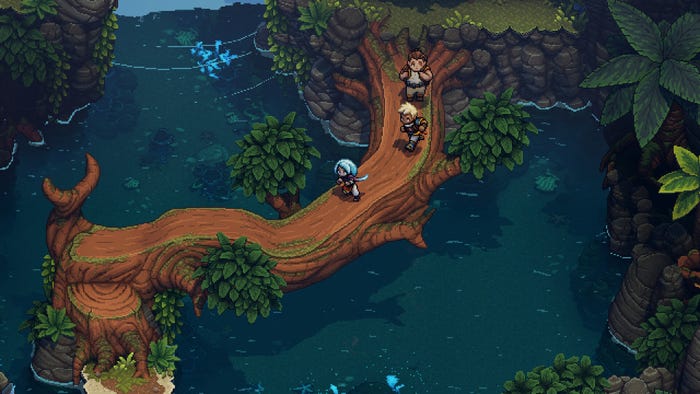
Image via Sabotage Studio.
This is a team that produced a compelling side-scrolling platforming adventure and then pivoted to a top-down roleplaying game that made turn-based combat feel as compelling as high-speed platforming. Finishing Sea of Stars made me say aloud “I really want to see what this studio does next.” Here’s hoping it’s just as thrilling.
Marvel’s Spider-Man 2 (Insomniac Games/Sony)
What stood out for me in Marvel’s Spider-Man 2 was how Insomniac efficiently used its foundational gameplay tools to explore a new take on Spider-Man’s classic Venom arc.
The studio’s take on the story used its dual protagonists to explore not just how the symbiote draws out the worst instincts of its host, but how their selfish behavior affects the people around them. Spending time with co-protagonist Miles Morales as Peter Parker brushes him off while he’s in real dire need of some emotional support puts this narrative theme right into the gameplay, and props up other narrative beats largely explored in cutscenes.
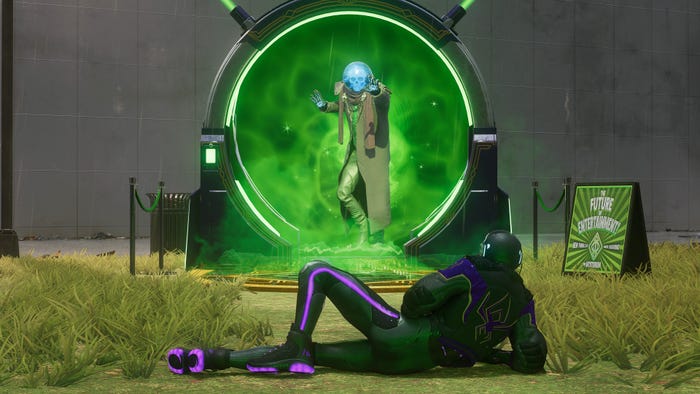
Image via Insomniac Games/Sony.
A late-game boss fight that I won’t spoil really brings this emotional conflict in for a landing, and it’s impressive the game pulls this off while also noodling with the idea that maybe supervillains don’t need to be locked away and deserve a chance at reform. “Be Better, Together,” says Sony’s marketing. By the time credits roll on Marvel’s Spider-Man 2, players who take the story to heart will want to be better too.
The Last Spell (Ishtar Games)
I played The Last Spell for at least 20 hours while quarantining in a San Francisco hotel with COVID-19 in the latter days of GDC 2023. It earned a spot on this list.
Okay but for real, I do appreciate what Ishtar Games accomplished with The Last Spell. It’s a terrific twist on Tower Defense that rewards players who learn the ins and outs of both its basebuilding and hero mechanics. Paying close attention to enemy behavior and knowing how to prioritize unit and building placement makes for an obsessive experience I couldn’t put down.
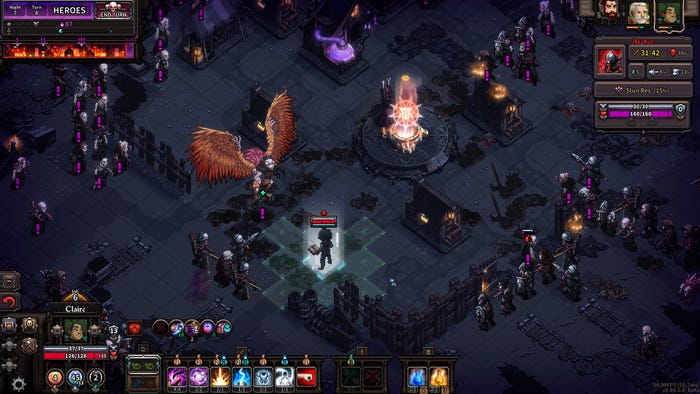
Image via Ishtar Games.
Again, I literally could not put it down. I had nothing else to do except watch the entire first season of Yellowjackets on Showtime. COVID-19 butchered my GDC trip, but The Last Spell successfully helped me through a very depressing quarantine.
Hi-Fi Rush (Tango Gameworks/Bethesda Softworks)
Hi-Fi Rush is the funniest game I played this year. Tango Gameworks’ all-out effort to make a musical combat game deserves kudos for revitalizing the 3D beat-em-up genre but it wouldn’t be as special a game if it wasn’t bursting to the brim with personality and an excellent sense for what makes a good joke.
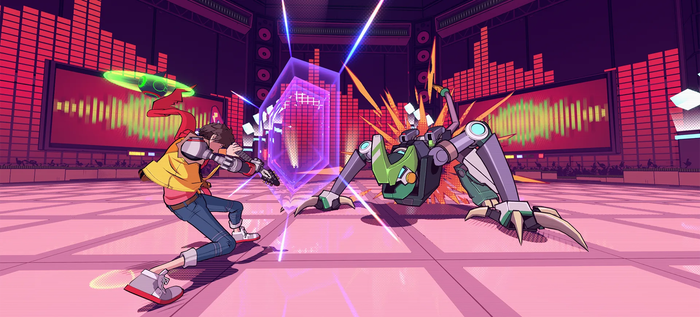
Image via Tango Gameworks.
Explaining the humor would obviously defeat the point of the humor so I’ll instead call out that the comedic energy isn’t limited to cutscenes and background chatter. The game’s level design and big boss setpieces swing through an incredible range of tones full of jaw-dropping visuals, often making time for visual gags and surprise turns in gameplay.
I loved the characters, I loved the combos, I loved the confidence, and I loved the charm. I loved Hi-Fi Rush, and was so thrilled that it got the surprise drop that it did.
Alan Wake 2 (Remedy Entertainment/Epic Games)
This is an unusual pick for me. I did not play Alan Wake 2 but I watched my fiancée enthusiastically dive into it. And the moment they stepped into what amounted to a half-hour-long playable rock opera music video with music by in-game band The Old Guards of Asgard (played by real-life band Poets of the Fall) I began hooting and hollering like Yosemite Sam.
When Remedy began experimenting with in-game video integration with Quantic Dream I can’t say I thought they were hitting pay dirt. Its use in Control was…interesting, but superseded by the general spooky “vibes” of the whole adventure. But this is it. This is the moment they spent a decade chasing.
This is a song that doesn’t have quite the same kick if you watch an edited-for-YouTube version or the (charmingly choreographed) performance at The Game Awards They made a true “mixed media” work of art that bends the player’s mind in form and function. Fantastic, fantastic, fantastic.
It’s a new high point in the art of game design and the game’s enthusiasm for all things horror, noir, and the power of rock all bubble through in one brain-bending moment. Remedy you magnificent bastards I can’t wait to get more of this in your future games.
For more end-of-year coverage from Game Developer, be sure to TKTK






